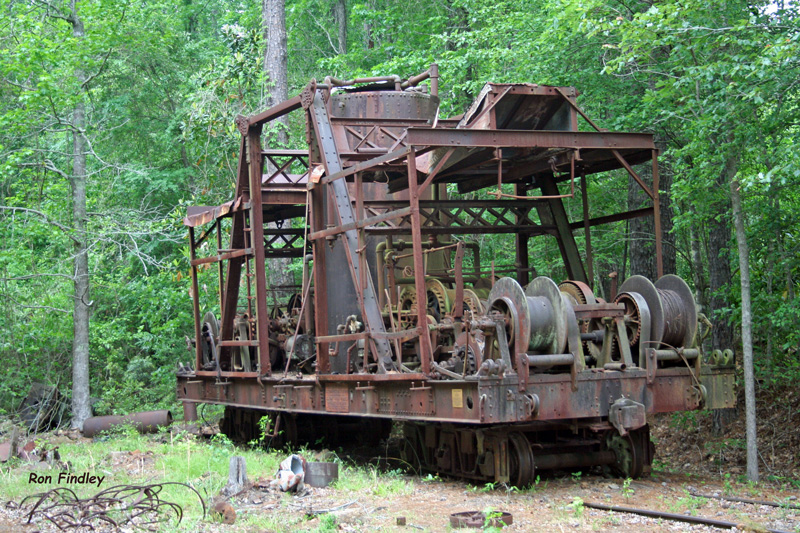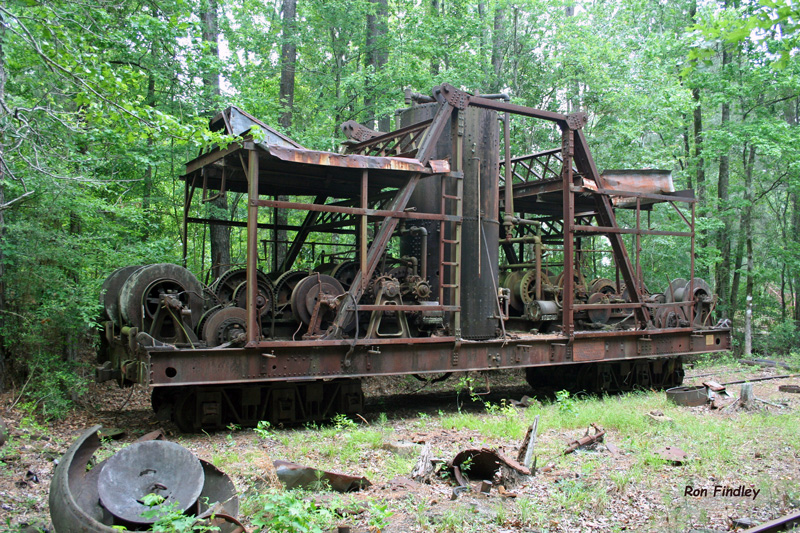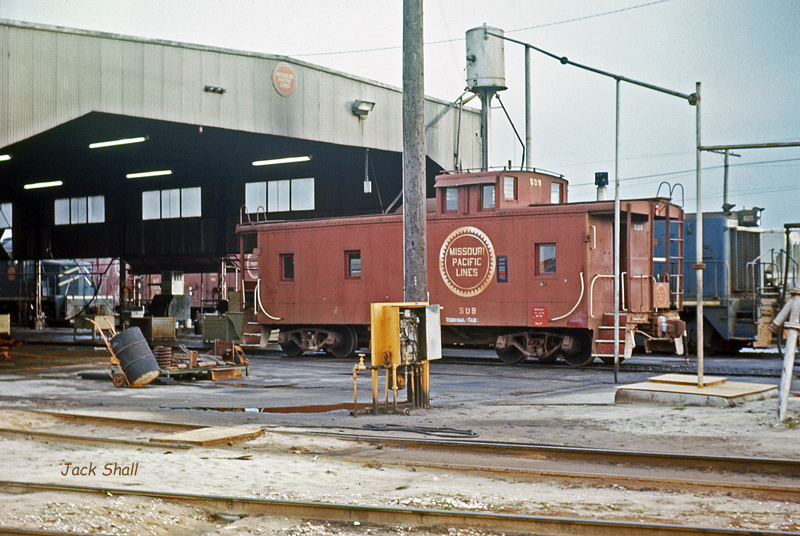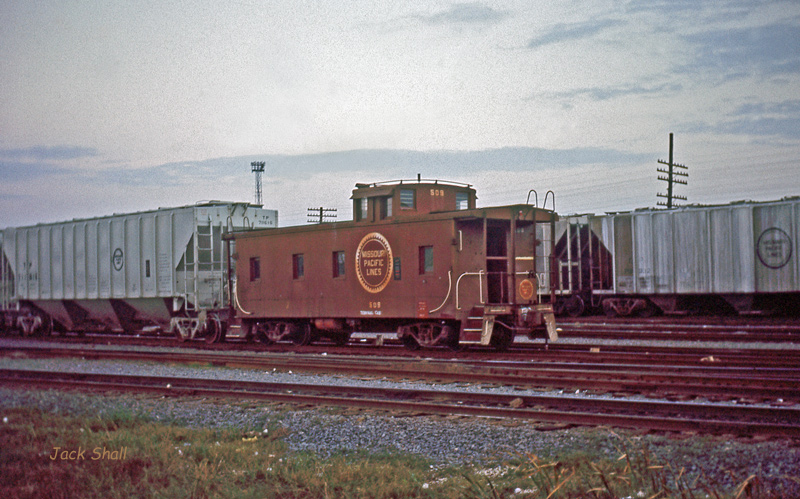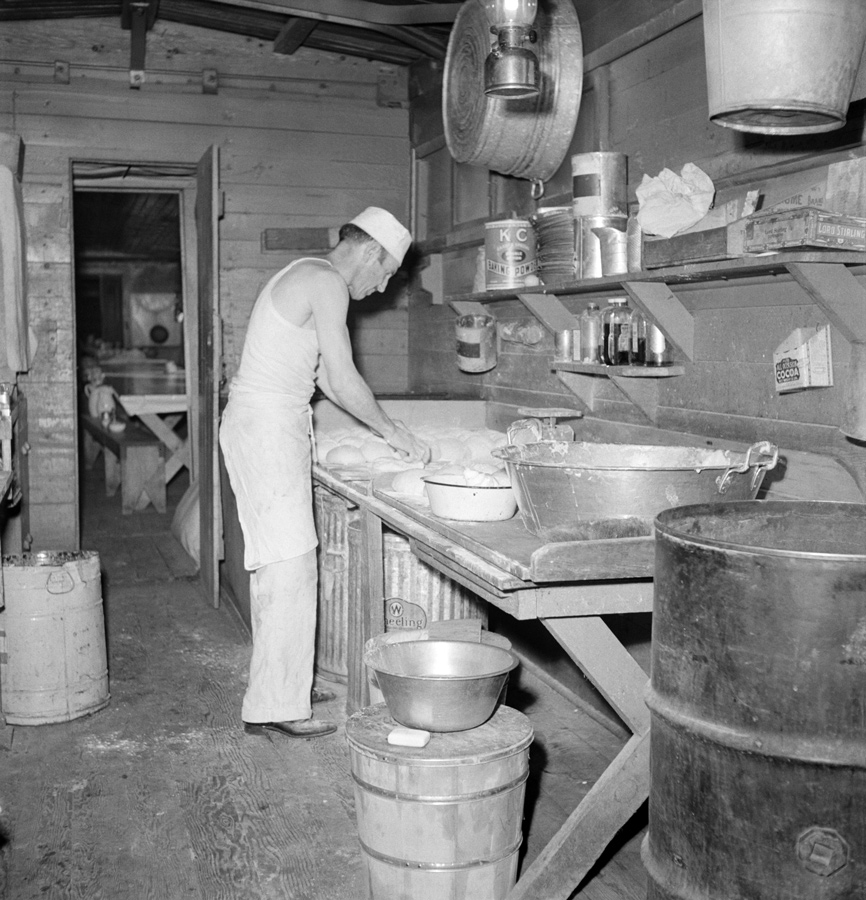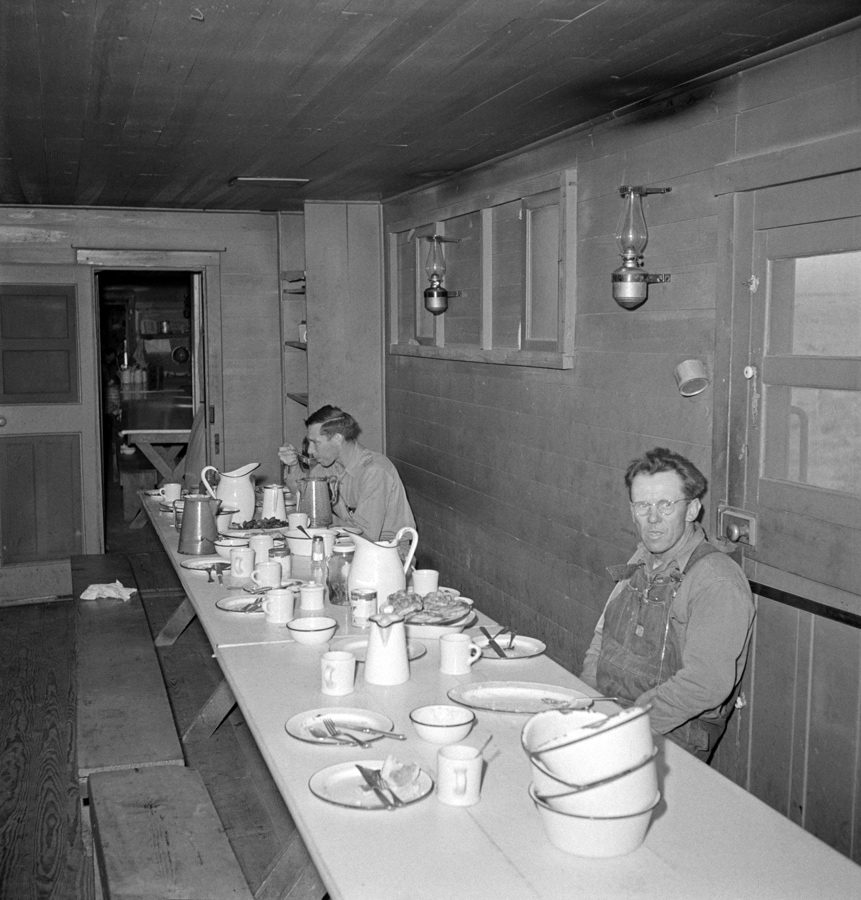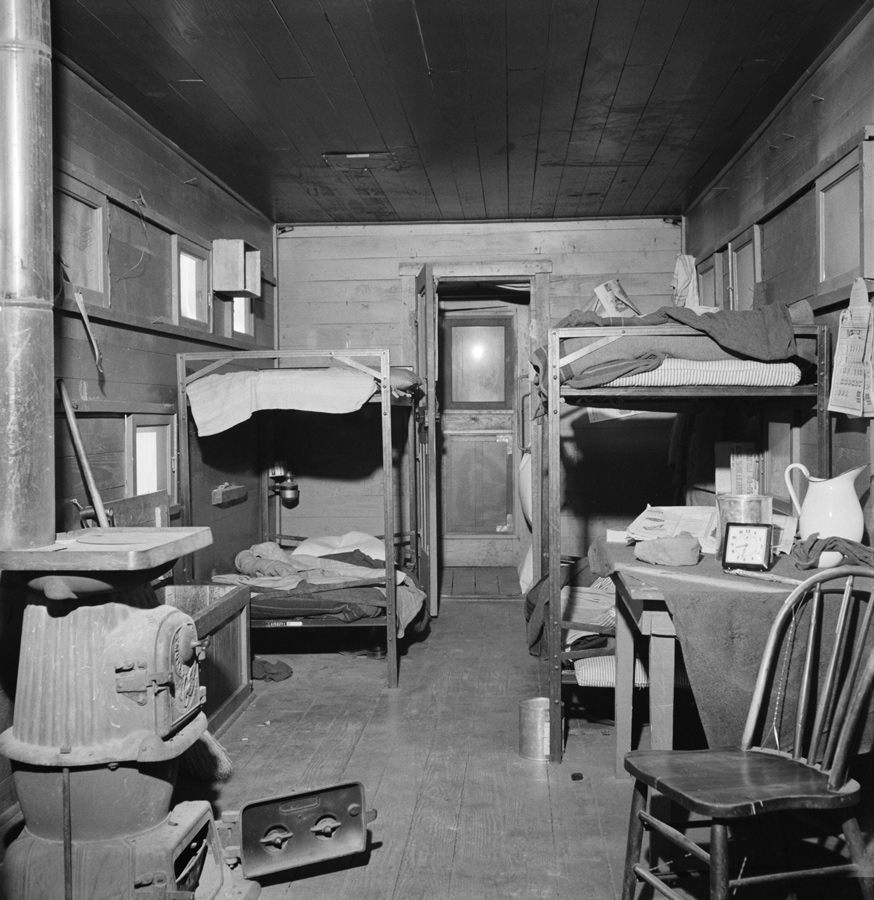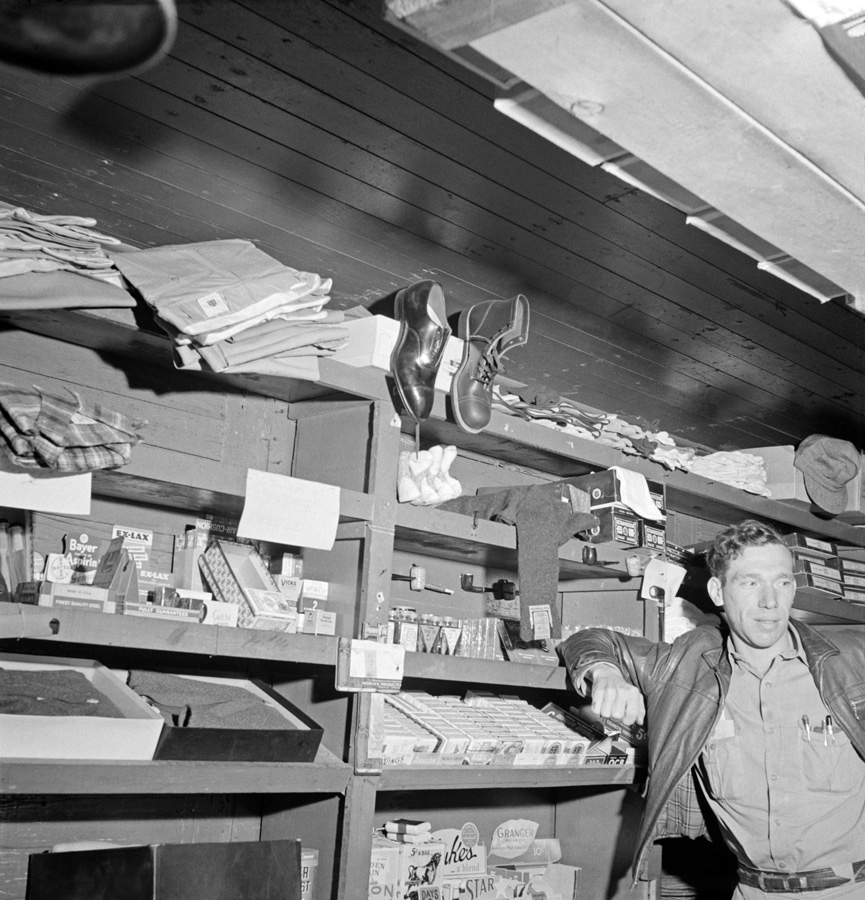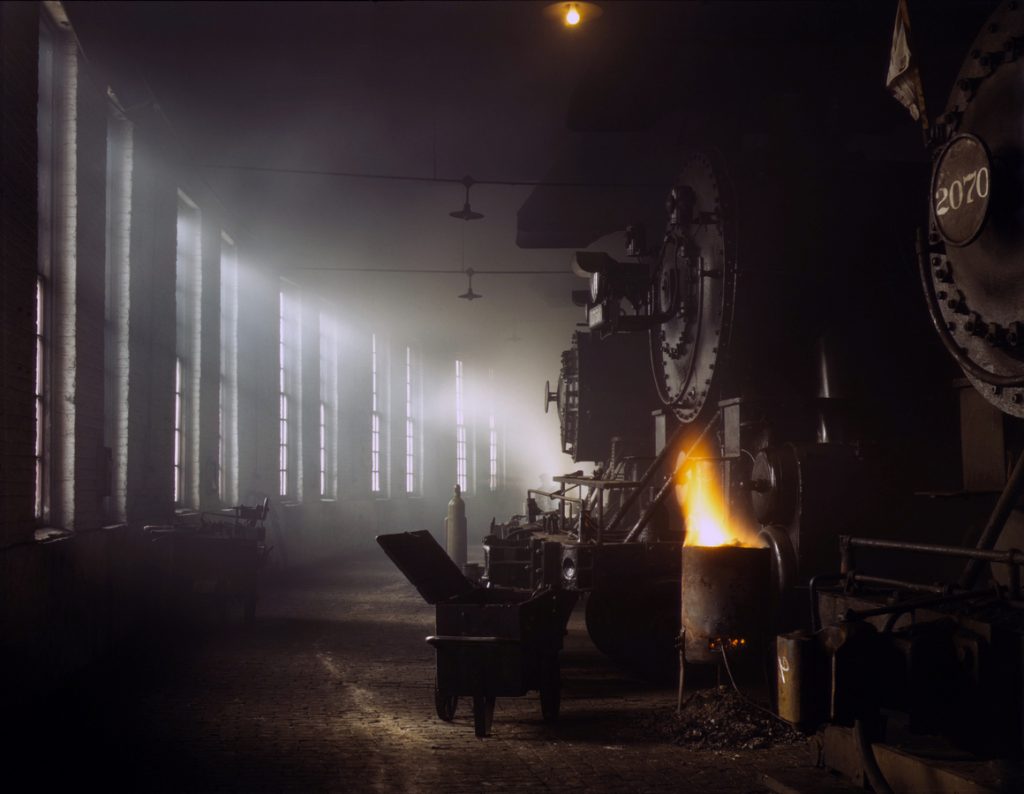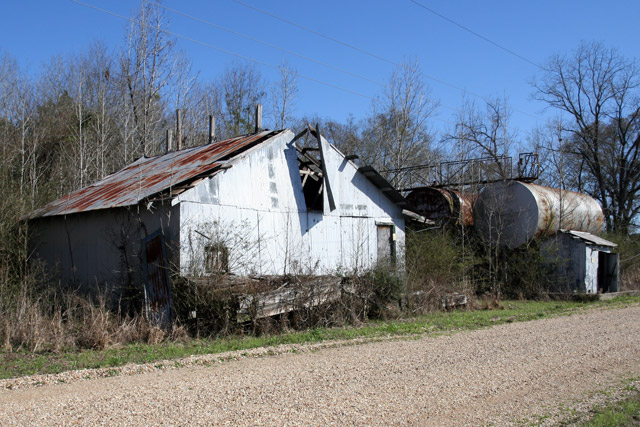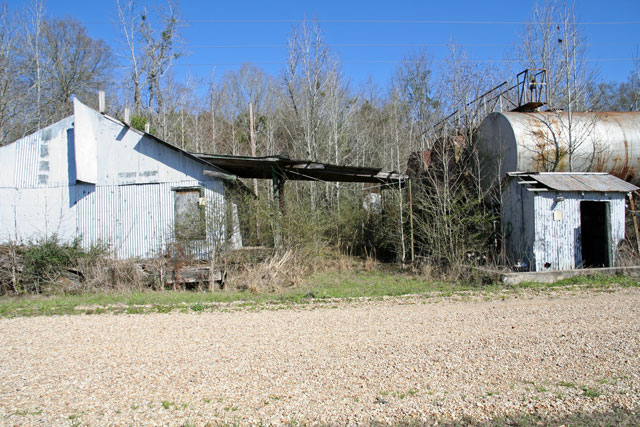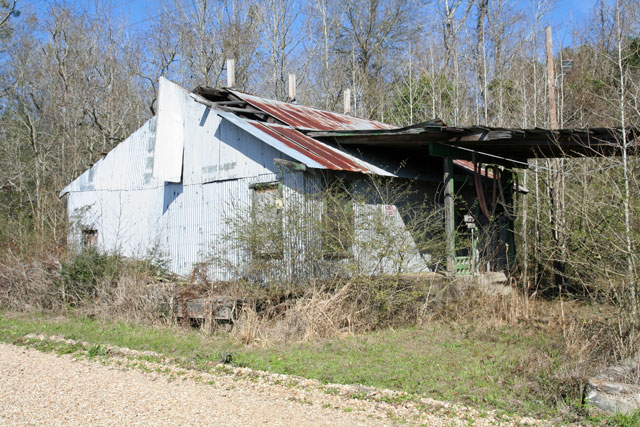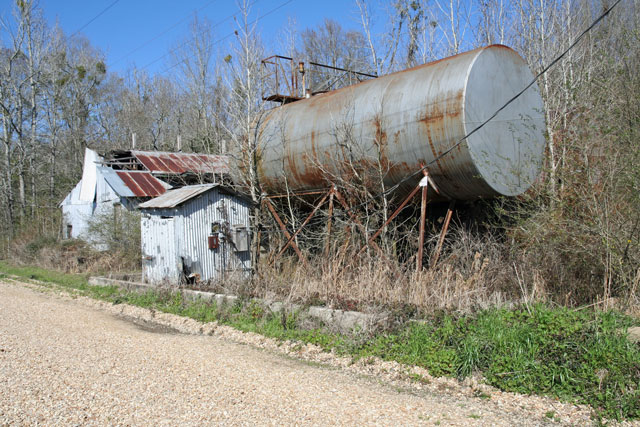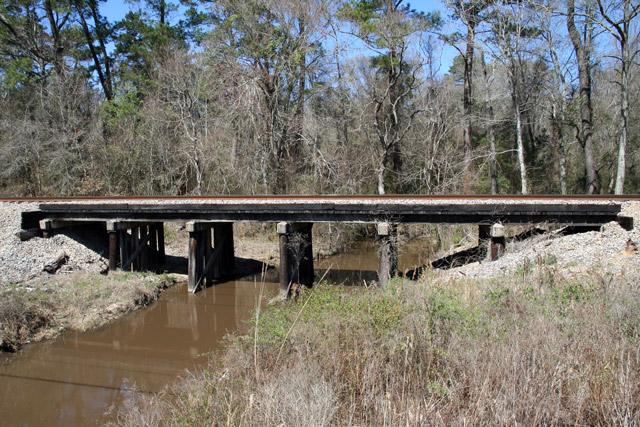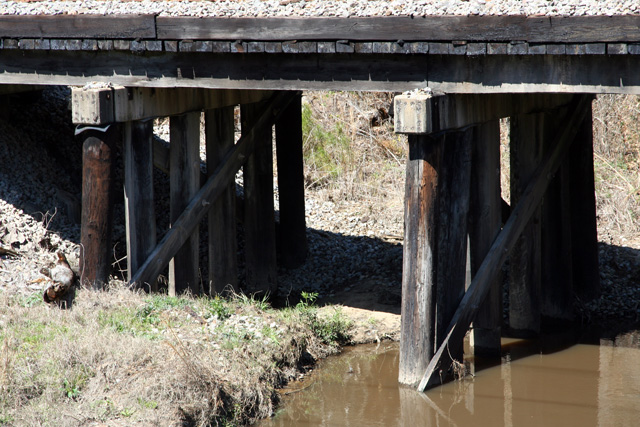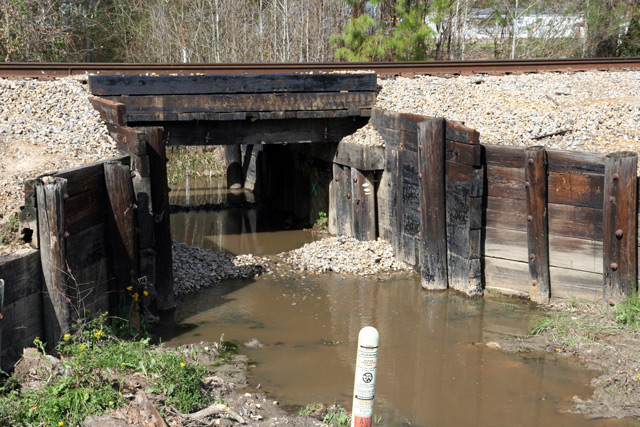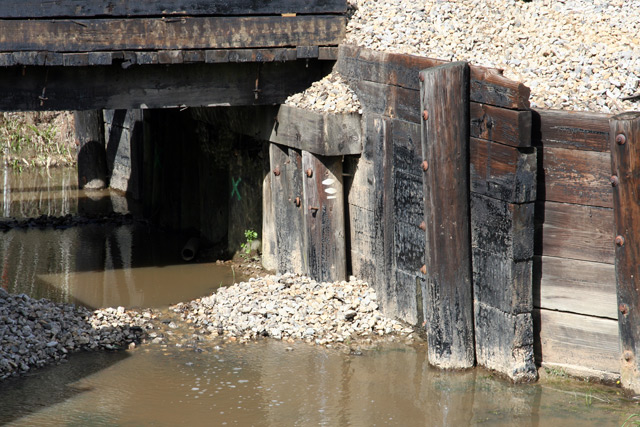Last week we saw some photographs of the Clyde double-ended rehaul skidder on display at the Southern Forest Heritage Museum in Long Leaf, Louisiana. The skidder dragged the logs through the woods up to the railhead. But another machine was used to actually load the logs onto the rail cars: the McGiffert log loader. The museum has two of these machines on the property.
The machine straddled the track and would pull empty log cars through its supporting framework, loading each car as it reached the front where the boom was located. Another feature was the ability for the machine to relocate itself. There are a pair of powered trucks (wheelsets) tucked up high in the support structure that can be lowered to the rails. The machine then lifted itself so the weight was on the trucks, then propelled itself to the next loading location. Once there it would lower itself to the ground, then raise the trucks back up to the “storage” location, allowing the empty log cars to roll beneath it.



You can read a bit more about McGifferts and see additional images of them on this RR&G posting, and also on this SFHM Research Paper. The former has a nice video by Everett Lueck explaining the McGiffert, the latter has information about McGifferts as well as the Clyde skidder featured last week.

